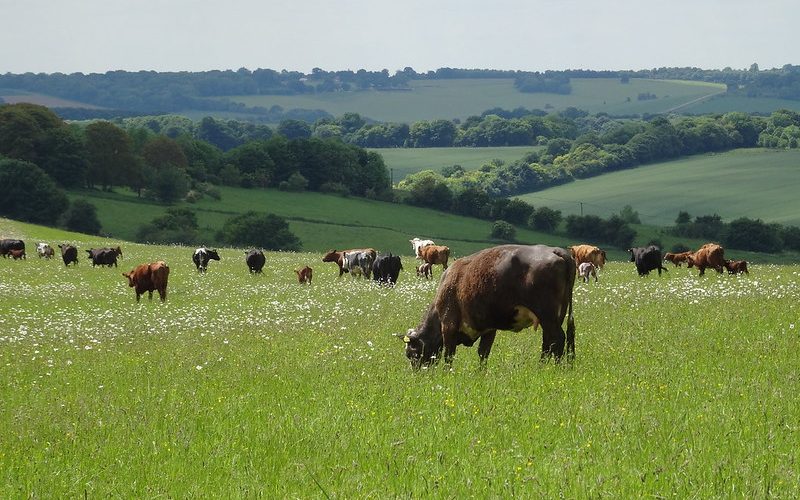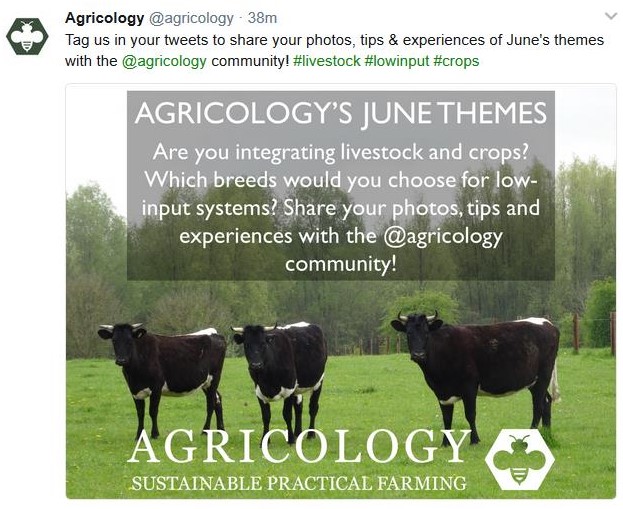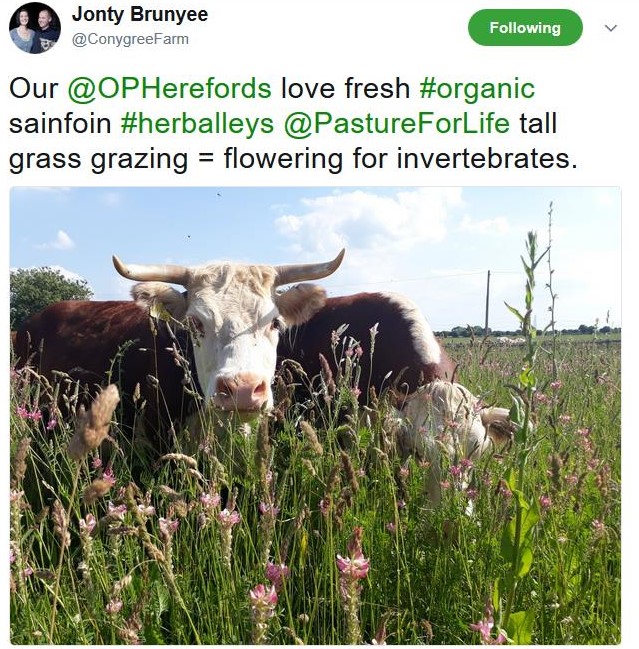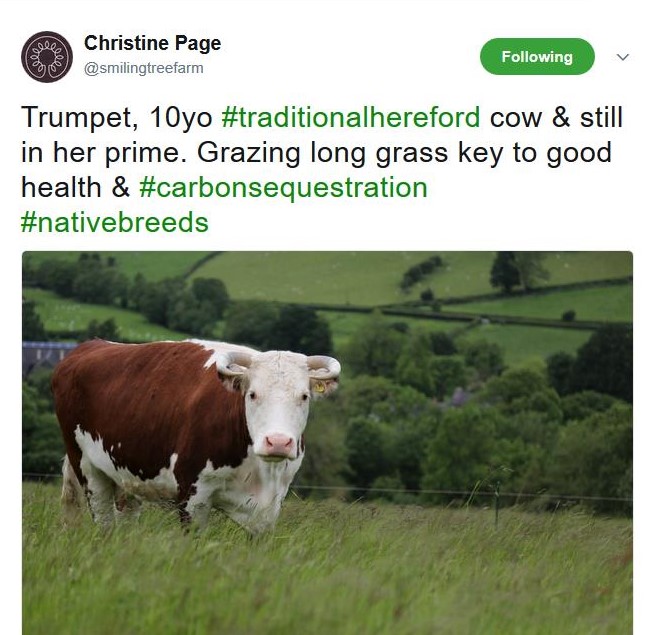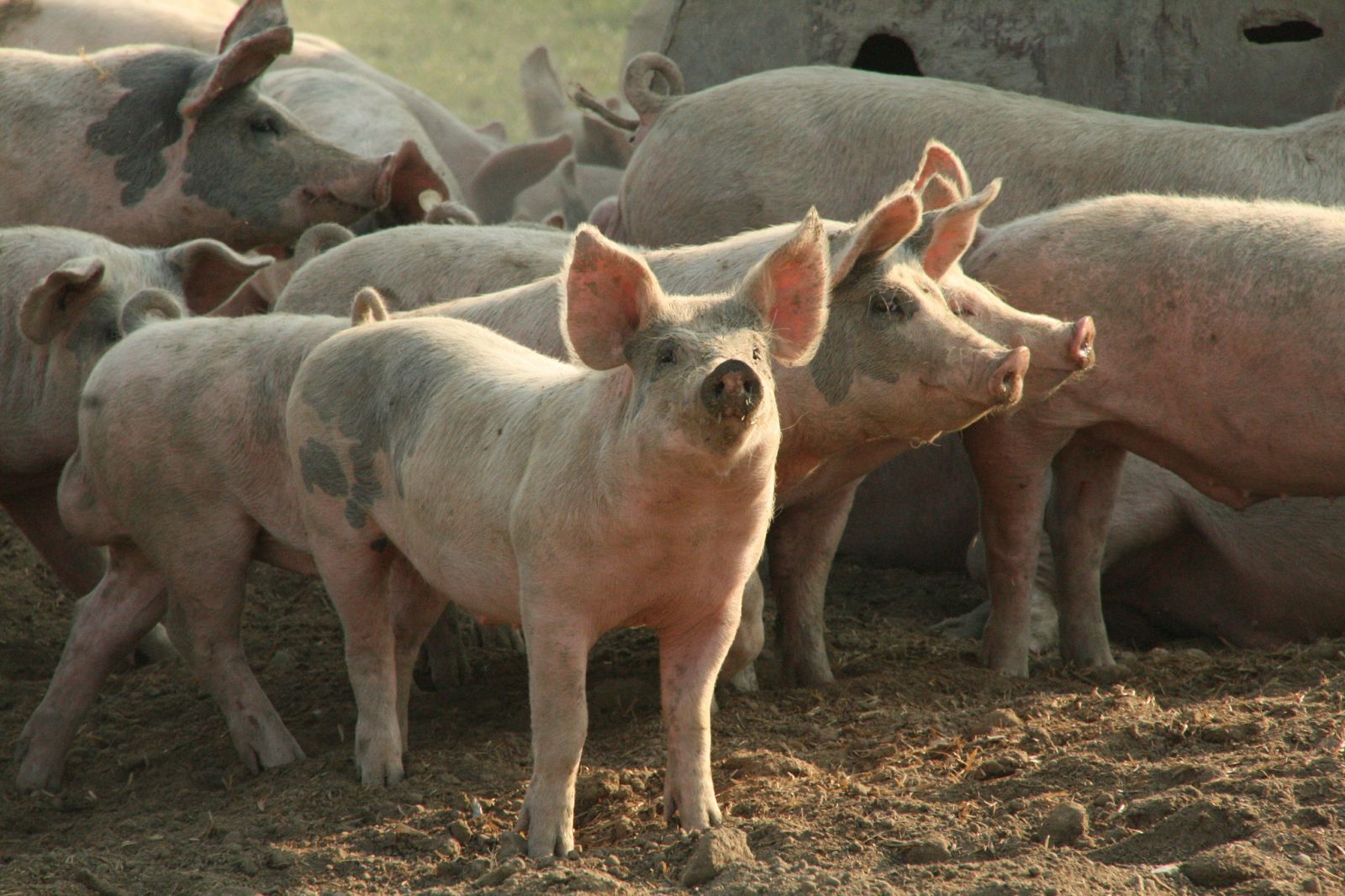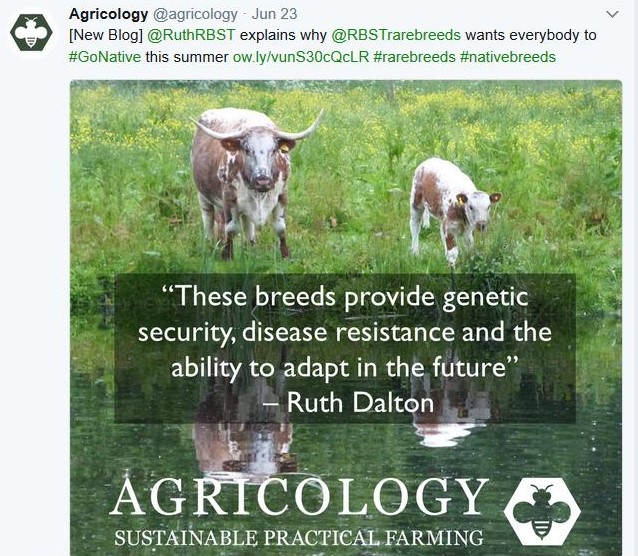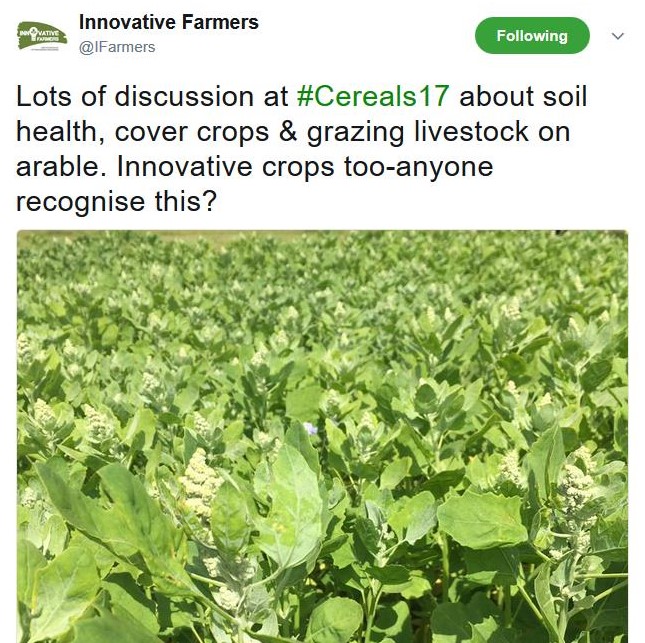June’s newsletter; a low-input & livestock tour!
Welcome to this month’s newsletter! Much of the content this month has been focused on what farmers are doing in the field; demonstrating examples of using breeds for low-input systems and integrating livestock and crops. Moving back to a mixed farm approach holds a multitude of benefits and opportunities to reduce inputs and costs, better manage weeds and enhance soil quality. Breed selection is a key part of designing a low input system and careful consideration of on-farm resources and matching with attributes of native and low-input breeds offers the potential for more sustainable farming systems. We started the month with a reminder of the themes and inviting you to share insights with the @agricology community:
(Posted on Twitter)
Jonty Brunyee from Conygree Farm, and featured in our farmer profiles, posted a photo (see below) of their Traditional Herefords; a native breed widely used in conservation grazing with many attributes such as hardiness, ease of handling, and adaptability, that are suited to low input farming. Christine Page also keenly advocates native breeds and the health benefits that a “pastoral diet of grasses, forbs, herbs, wildflowers and browsing hedgerows” (as worded in her Agricology farmer profile) can bring, and the knock-on beneficial effects to meat flavour. She also posted a photo of her Traditional Herefords:
(Posted on Twitter)
‘This month’s featured farm’ has been Richard Gantlett, who farms beef cattle and cereals biodynamically in Wiltshire. You can view several videos from his profile, one of which introduces us to his rotationally grazed pedigree Aberdeen Angus suckler herd. He describes the cattle’s varied diet, emphasising “the health of the whole farming system is important, to feed in to the health of the cows.”
‘FarmHealthOnline’ is packed with information regarding breeding and the impacts on animal health. As stated on their ‘Cattle Breeds and Breeding’ page, “The choice of breed or strain of cattle on a farm should account for the capacity of animals to adapt and thrive under local conditions as well as their potential to resist disease.”
Other resources featured in the newsletter provide information to help you select livestock breeds and manage them in a way that nurtures their health and best suits your farm business needs…
‘LowInput Breeds’ hosts technical notes which are particularly useful in providing insights into developing integrated livestock breeding and management strategies to improve animal health, product quality and performance. AHDB Dairy’s ‘Breeding & Genetics‘ webpages offer a great resource to help you identify the cow genes best suited to your business and make your own livestock breeding decisions. For organic, low input farmers, the SOLID project’s featured technical note ‘Breeding cows suitable for low-input and organic dairy systems’ provides insights into what you should consider when selecting dairy cattle for an efficient and low-input system. This is a theme that is also explored in June’s video blog by Richard Smith in which he explains how and why Daylesford Farm have bred back from the Holstein to the British Friesian in their quest for a dairy cow that is best suited to an organic system.
The Rare Breed Survival Trust (RBST)’s ‘Rare and Native Breeds’ webpage provides lots of information to help you identify and select the most appropriate breeds according to your farming system and conservation goals. Ruth Dalton explains why the RBST wants everyone to #GoNative this summer in her featured blog, and emphasises the value of native breeds to farmers:
(Posted on Twitter)
The National Sheep Association (NSA)’s report ‘The Complementary Role of Sheep in Upland and Hill Areas’ emphasises the vital role of traditional hill and upland breeds in low-input farming; them being physiologically suited to the harsh conditions and efficient at rearing lambs and maintaining their own body condition.
In another video blog featured this month, Louise King, Reserve Manager at Berks, Bucks and Oxon Wildlife Trust’s Chimney Meadows Nature Reserve, talks about how they are using low-input livestock breeds to manage their grasslands for wildlife, forage and flood attenuation. Other content explores using livestock within cropping systems and ways in which they can be integrated… This is a topic that one of our featured news items from the Farm Carbon Cutting Toolkit celebrates in its ‘Winner of the 2017 Soil Farmer of the Year competition story’; the winners provide examples of livestock and crops being integrated to help build soil health. Ian Wilkinson, managing director of Cotswold Seeds keenly advocates this. You can read about his approach in the Soil Association report ‘Digging the Dirt on Honeydale Farm’, in which he describes the sheep that rotationally graze the deep rooting herbal leys as being fundamental to the system, transferring fertility to the soil and also effectively helping to control weeds.
‘Sheep and wheat – farmer insights’ features video footage of farmer John Pawsey recording his quest of grazing sheep on wheat to improve soil fertility and crop yields. This has been a topic of conversation in one of the many key farming events that have taken place this month, as noted on Twitter by one of our partners, Innovative Farmers:
(Posted on Twitter)
One of our news items links to a recently published National Sheep Association report which promotes the benefits of sheep in arable rotations. In the Nuffield report ‘Achieving more from less with dairy and arable’, the mutual benefits that can be attained from arable and dairy enterprises cross-over are explored.
It has been a very busy month for key farming events, one of which was the Allerton Project’s open day, celebrating 25 years of farmland research. Their reports that were launched at the event are now available on Agricology – look out for them being promoted again next month when we will be touching on the themes of exploring soil biological activity and managing pests and diseases. One event to look out for next month is NOCC (National Organic Combinable Crops 2017), the OF&G annual farming event, follow the link from the newsletter and find out more by reading Phil Sumption’s blog.
As always please get in touch if you would you like to share insights with the agricultural community – on enquiries@agricology.co.uk. Connect on social media; Facebook, Instagram, Youtube, and use @agricology to join in the conversation on Twitter.
Happy July farming!
Janie Caldbeck is the Content Editor for Agricology.
Photo credits: Organic Research Centre. Header image: Rachel Lewis
